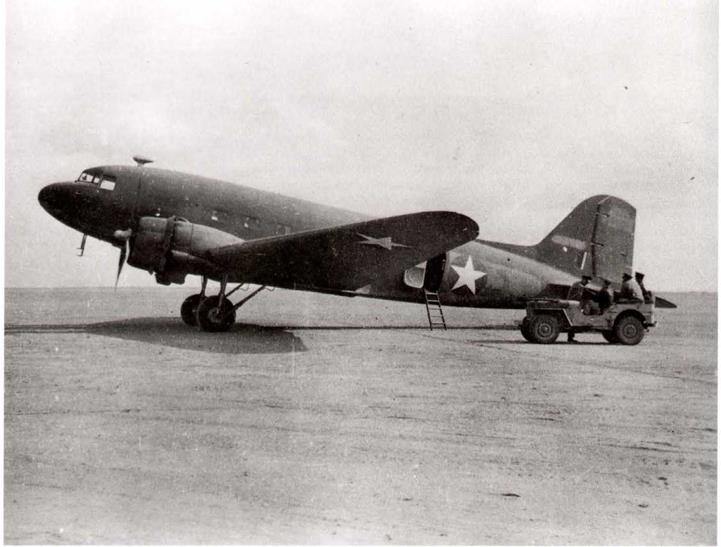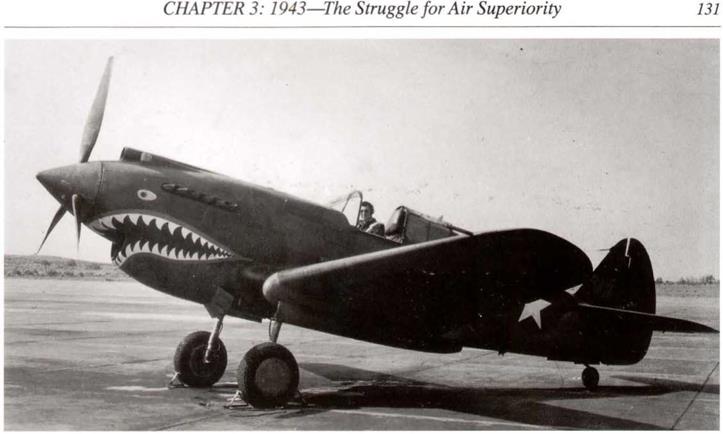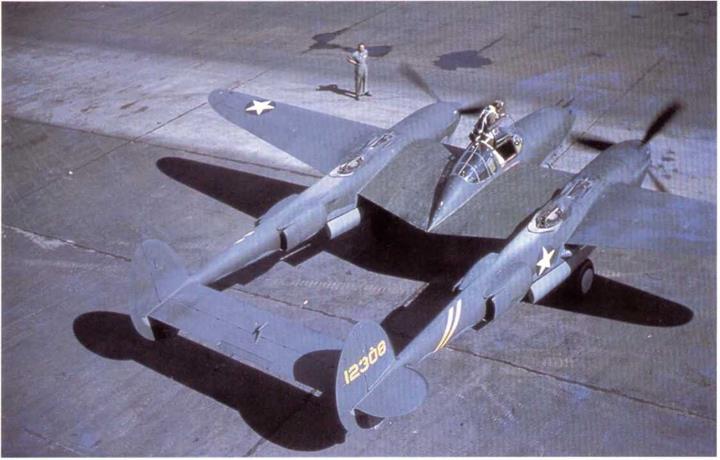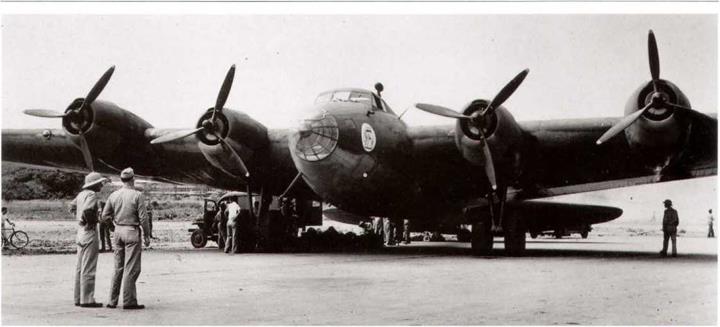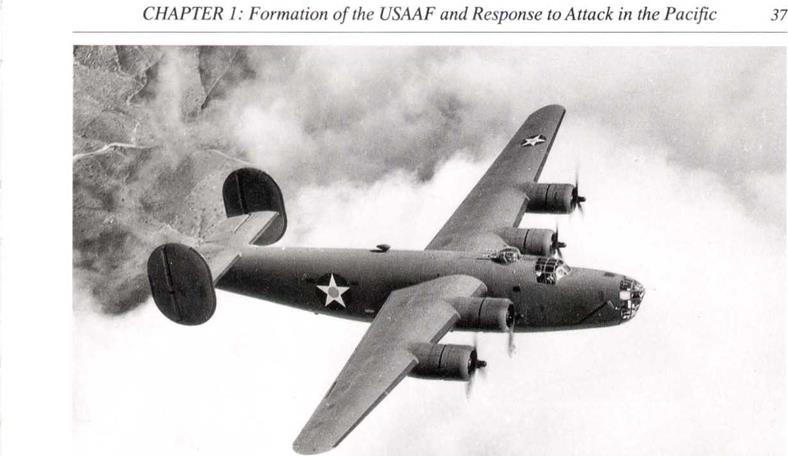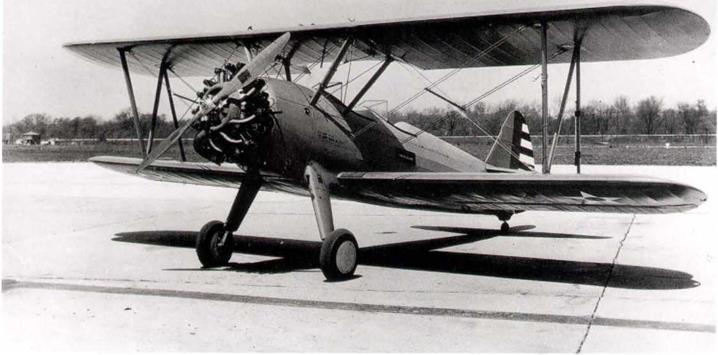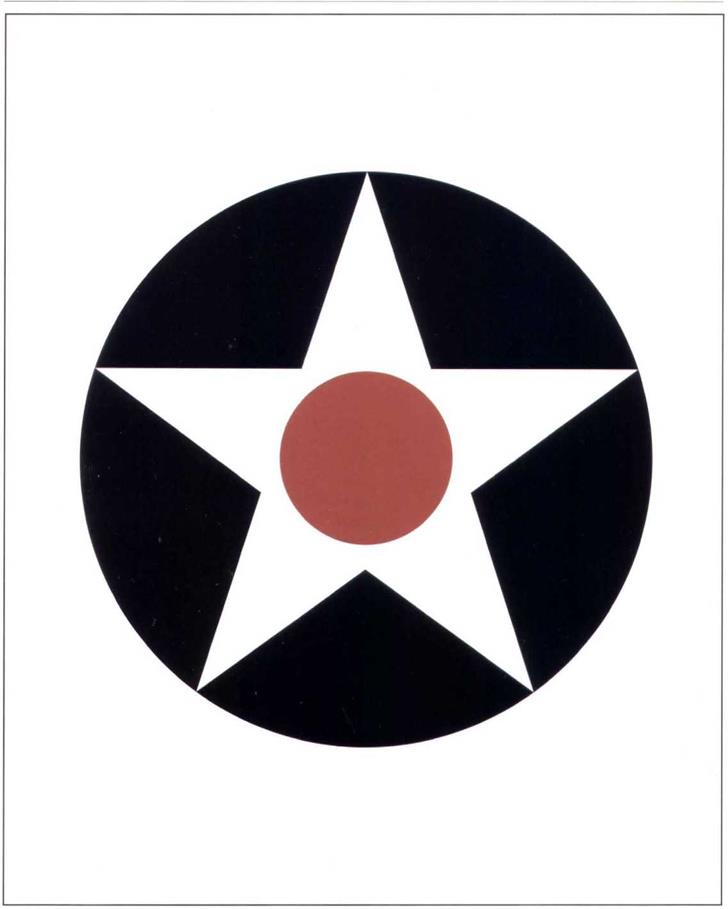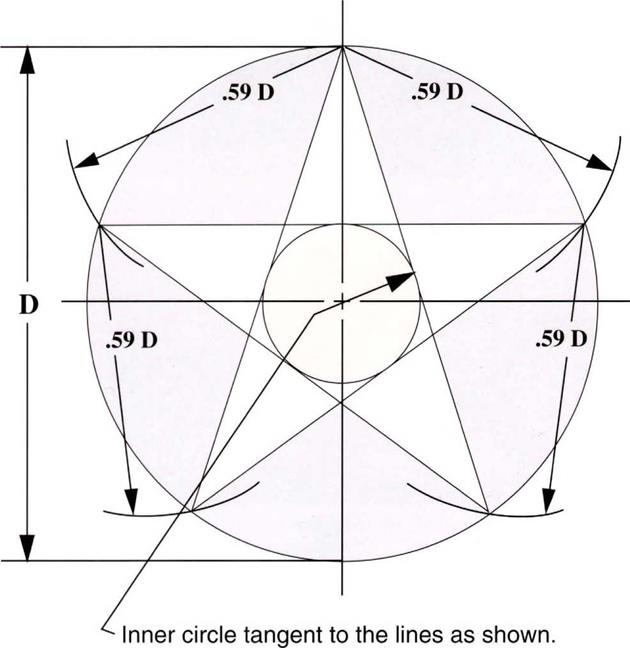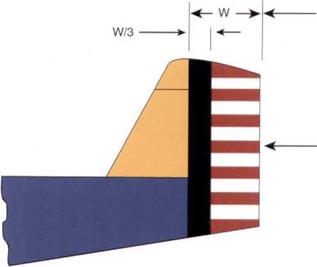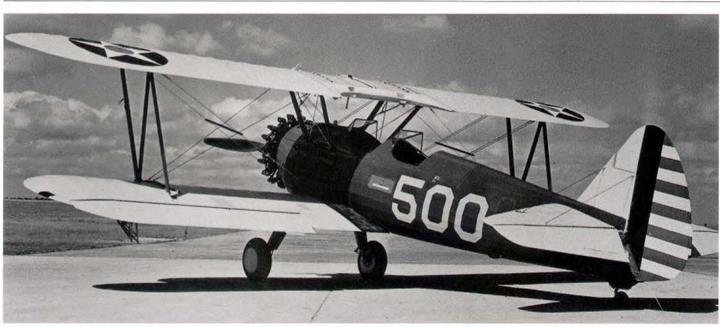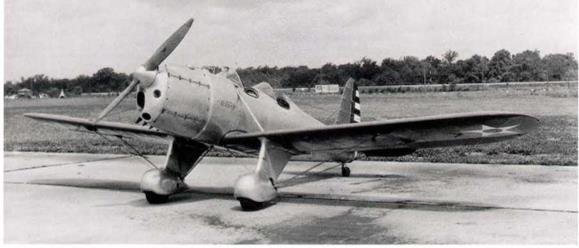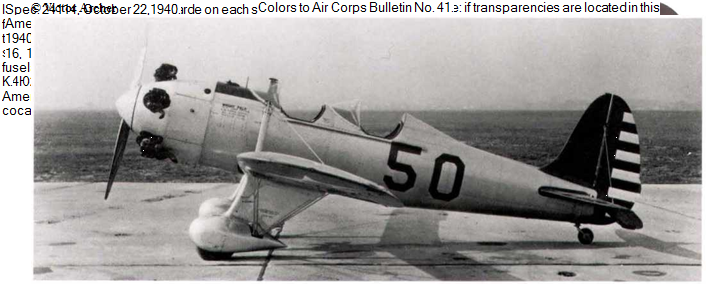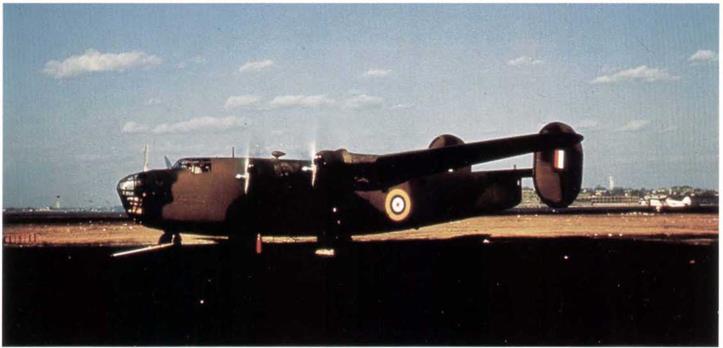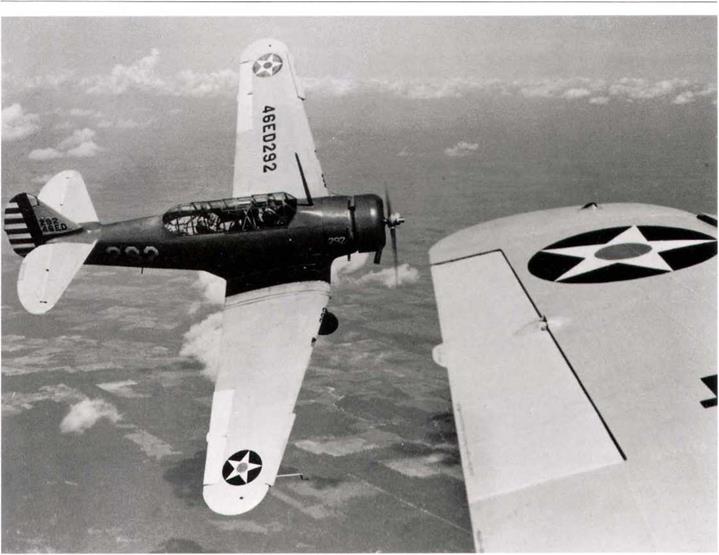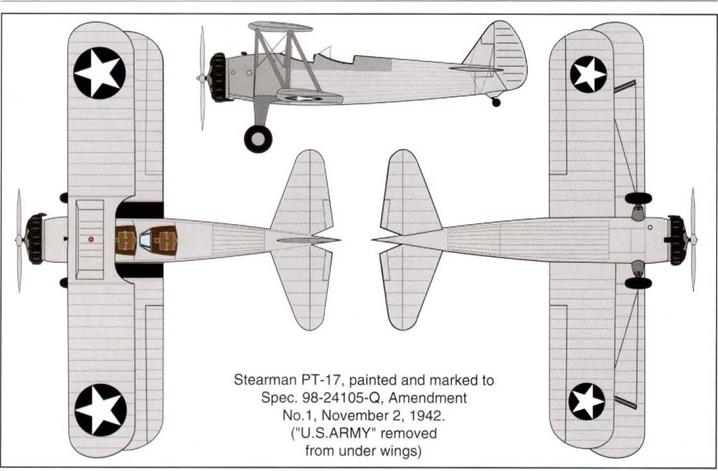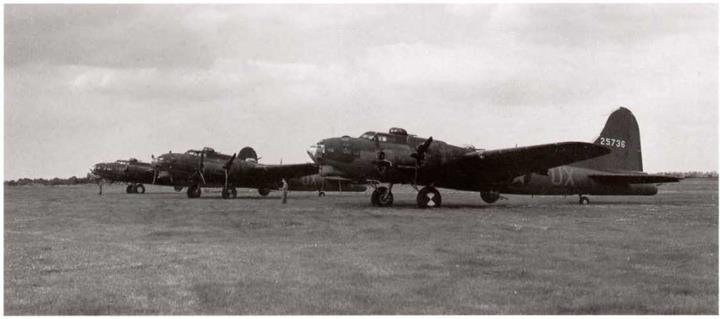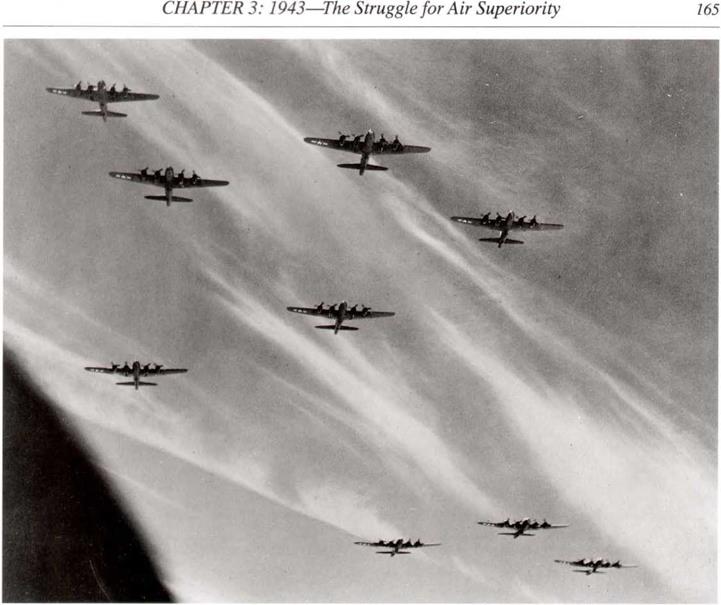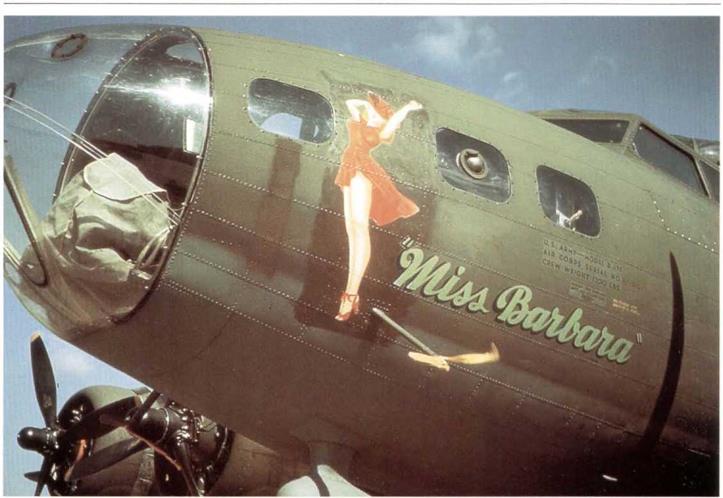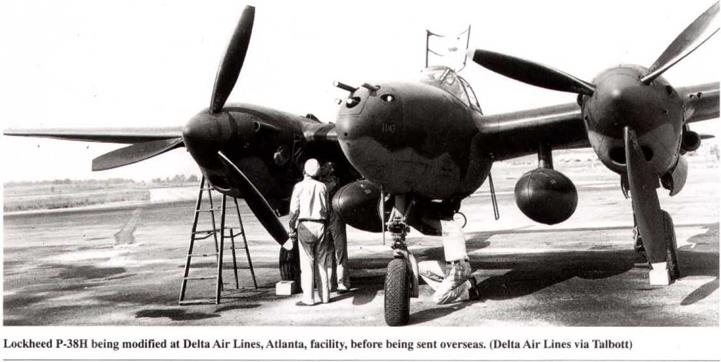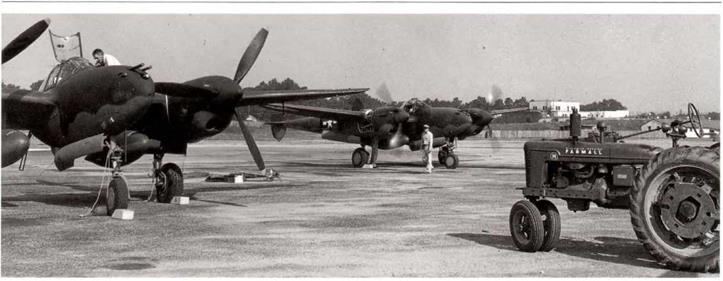Spec. No. 98-24105-Q issued on October 1, 1942, revised Radio Call Number, and other detail requirements for markings on airplanes and airplane parts
This new release of the markings spec, grew to no less than twelve pages in length. The revisions included those for camouflage markings and were as follows:
All exterior markings on aircraft with camouflage finishes were to be applied with either red, black, or blue, shades Nos. 45,44, and 47 respectively, of Bulletin No. 41, of the same materials as the finish on the airplane.
Lower Wing Markings required that the marking “U. S.ARMY” was to be painted on the lower surface of the lower wing of biplanes or on the lower surface of the wings of monoplanes, except when the airplane was camouflaged, in which case the marking was not to be used. The letters “U. S.” were to be painted on the right wing, and the word “ARMY” on the left wing, with the top of the letters toward the leading edge. These markings were to be centrally located with respect to the wing outline. The letters were to be of the vertical type, 24 inches high and with strokes four inches wide.
|
Douglas C-47-DL, 41-18393, is shown in North Africa at the end of 1942, Note the RAF fin flash on the fin. This was painted on all AAF aircraft operating in Operation TORCH and lasted well into 1943. (Nick Williams) |
|
Supermarine Spitfire Mk. VB, RAF serial number АЛ963, in yellow, on Dark Olive Drab and Neutral Gray camouflage. AAF star insignia on wings and fuselage. Note the Medium Green blotching on fin, rudder and elevators. There is a yellow number “2” on nose. (USAF) |
Vertical Tail Markings required that each airplane should have a radio call number painted on its vertical tail surfaces. The number was to consist of at least four numbers, to be determined as follows: The first number was to be the last number of the year in which the airplane was manufactured, and the remaining numbers were to consist of the serial number of the air plane, using zero where necessary between the year designated and the serial number to make four numbers.
Example No. 1. – The radio call number of an airplane manufactured in 1942, having serial number 42-5434, was to be
25434.
Example No. 2. – The radio call number of an airplane manufactured in 1942, having serial number 42-7, was to be
2007.
Aradio call number was to be placed on each side of the vertical tail surface. Where more than one vertical surface was used the call number was to appear on the left exposed side of the left hand surface, and the right exposed side of the right surface. Each numeral was to be of the block type, the width two-thirds of the height and the strokes approximately one inch wide for each six inches in height. The distance between the numerals was to be equal to one-half the width of a numeral. The actual size of the numerals was to be such that the call number would be readily discernible from a distance of approximately 150 yards.
Uncamouflaged airplanes were to have the number on the vertical stabilizer surface. For light colored backgrounds, the numbers were to be black, and for dark backgrounds, the numbers were to be orange-yellow to chip No. 5 of Spec. 3-1.
Camouflaged airplanes were to have the number across both the vertical stabilizer and the rudder surfaces. For light colored backgrounds, the numbers were to be black Shade 44, Bulletin No. 41. For dark backgrounds, the numbers were to be red or blue, color shades Nos. 45 or 47 of Bulletin No. 41.











